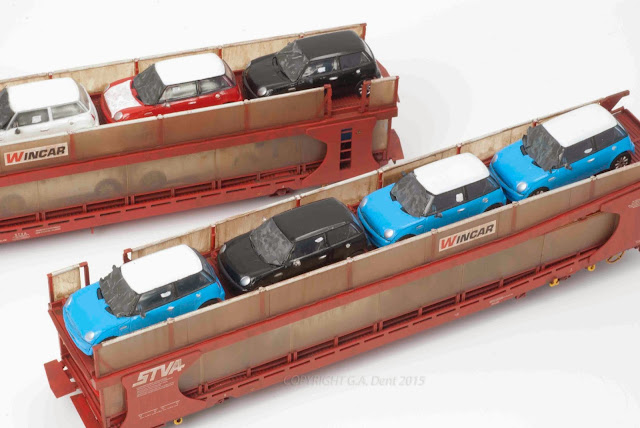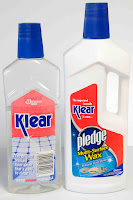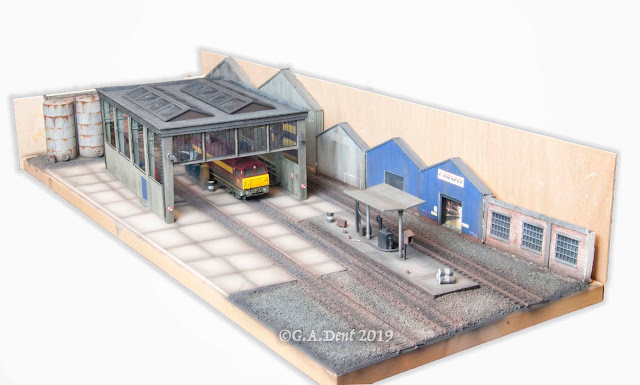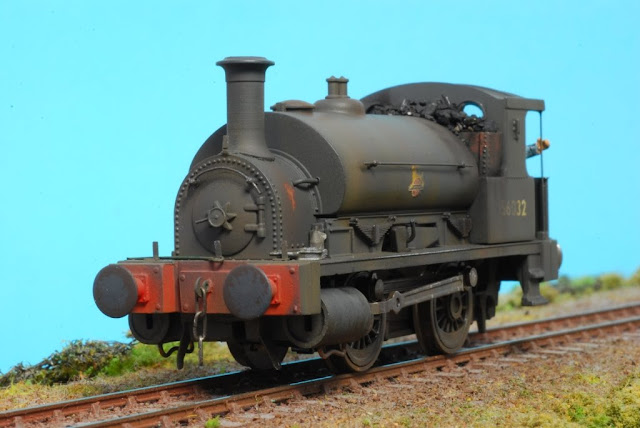CARTIC LOADING
Bachmann's car transporter wagons loaded up and ready for action.
The Bachmann IPA twin-set was an exciting release for modern image enthusiasts a few years ago, and it certainly didn't disappoint when I finally got my hands on a couple. But they arguably look at their best when loaded with a decent set of motor cars, so I decided to have a go. My first thought was to stock up on die-cast models, but soon realised that the accumulated weight would prove too much, especially once a handful of twin-sets had been treated.
Next option was to track down some Rietze HO scale plastic cars, especially their early-2000s style Ford Mondeos to replicate the flow of imported vehicles that these wagons have commonly been used for. But, with these out of stock, I plumped for the easy option - Bachmann's Scenecraft 'small cars'. Offered in 8-packs, they're designed especially to fit the IPA transporter without overloading them weight-wise. They look very similar to the ubiquitous BMW Mini, despite the vague product branding, and can be readily detailed to an authentic appearance.
Although not a strict replication of prototype practice, I also decided to add some windscreen covers, more as a means of showing how they can be created simply and effectively, especially for modellers of other vehicle flows or earlier periods. You can see how the whole thing was done in the next issue of Model Rail magazine (MR207, out on 12 March)...







Hi George
ReplyDeleteGood to see the subject of cars on rail being tackled. As you say the most realistic option both in terms of weight and cost is the use of the Bachmann MINI look-alikes.
The article heading refers to Cartics; in railway terminology these were the four-section CARTIC 4s, running on bogies, of which Triang made a simplified version. The IPA vehicles, known by STVA as Tal 489s, are articulated but are not Cartics.
In operation, these vehicles are designed to allow cars to be loaded over the articulation, which was the point of building them in that configuration rather than simply as individual two-axle wagons. Normally the car straddling the articulation would be chocked (secured) over the rear wheels only, with the steering wheels taking up the flex of the wagon as it travels round curves. In the case of the MINIs used by you, it is of course not necessary to resort to that as they fit neatly on each half of the unit.
In my time at EWS MINIs were transported from Cowley to Purfleet for export, but using the WIA enclosed type of car-carrying vehicle that was originally built for Channel Tunnel service.
The windscreen protection is rather anachronistic, as you point out. Cars in transit used to be coated in a wax protective film, which was washed off at destination, but wax in the drains was not a good idea and the process was discontinued. In-transit protection is now generally a white self-adhesive film called Wrapguard, which offers some cover against dust and small stone chips. That's a whole subject in itself... but it is a long time since the windscreen was the part of the car most in need of protection.
Thanks again for dealing with the topic!
Chris Thomas
Hi Chris,
DeleteThanks for the comment and the useful info. Sorry, that's just my lazy shorthand responsible for calling them 'Cartics'! Interesting point about how cars loaded over the articulated area were only chocked at the rear wheels.
You can just glimpse my attempt at the white film on one of the red MINIS in the photo, applied over the bonnet only - just some white acrylic paint brushed on thickly, with the brush strokes resembling the ripples in the film!
All best wishes,
George.